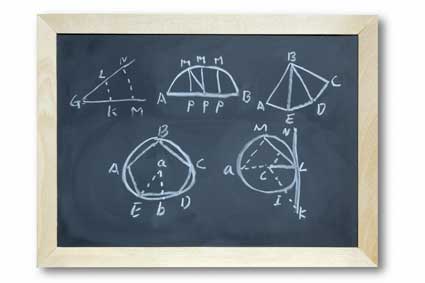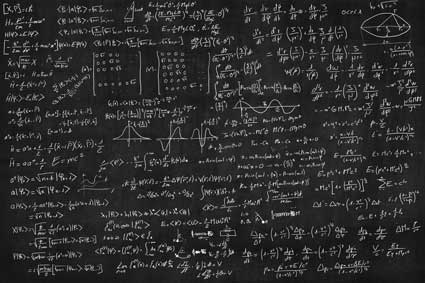?
In solid state physics, we concentrate on the properties exhibited by atoms and molecules with respect to their association to and alignment within crystallized objects.
As a whole, this realm of study is referred to as "Crystallography." Researchers in this field are continually seeking new marked characteristic traits of materials. The crux of their work involves making educated predications and explanations as to the nature of the aggregate (as a whole) of the atom and how it will behave according to quantum theory, which is essentially the theoretical basis of modern physics and explains the nature and behavior of matter and energy on the atomic and subatomic level.
Solids. Mechanical and Thermal Activity
An important focal point of solid state physics is the mechanical (movement-oriented) and thermal (heat-driven) activity of solids. Specifically, researchers study the following characteristics:
- Vibration settings of crystals.
- Transmission of vibrating energy (thermal conductivity).
- Energy amounts that need to be absorbed in order to yield a set temperature change (specific heat).
- Series of phases delineating set periods, such as the melting points of crystals.
And while researchers will appreciate the varying properties of solids, such as crystalline, mechanical, thermal, and optical, their greatest interest will lie in the distinguishable electrical properties, which most clearly identify the materials that have the most diverse behaviors.
Out of all the electrical characteristics it possesses, a solid's electrical conductivity (the ease with which electric currents flow through it) proves to be its single most important trait.
Classes of Solids
To fully understand how physics researchers view solids, it is helpful to first know that they group them into three categories: metals, nonmetals, and semiconductors.
Metals are highly conductive solids with little resistance to electric currents.
On the opposite side of the spectrum, the majority of solid nonmetals are insulators (solids whose conductivity is nearly zero). They offer basically endless resistance to electric currents.
And, lastly, the third class of solids, semiconductors, has levels of electrical conductivity that are neither very high nor very low.
A major revelation in physics occurred when scientists studying solid state materials were able to cite the laws of quantum mechanics to describe the extreme variations of electrical conductivity in terms of the atomic structure of the three types of solids.
Nature of Solids
Before moving forward with the notion of solids as they relate to physics, it is critical to first consider what exactly is meant by a solid state.
Most of us have worked with solids in some capacity in the past; in the last half century alone many new and previously unimaginable solids, materials, and structures have been introduced due to more sophisticated technologies.
At the very core of the question of the nature of solids is what is known as the Atomic Hypothesis. For quite some time, we have internalized the idea that all things (both tangible and intangible) are comprised of distinct atoms.
Only now, after centuries upon centuries, can distinct materials be identified in terms of the arrangement of the atoms that comprise them. Previously, the Atomic Hypothesis was essentially just that, a hypothesis; but since the advent of modern electron microscopes and their power, it has become "Atomic Fact."
Even if modern physics were to further evolve the notion of atomic structures, the basic underlying concepts would not change. Though the mathematical formulas describing inherent activity at the atomic level may progress, it would not affect the basic constitution of atoms or their alignment within the object.
We say this so that you understand why, when we speak of solids, we concentrate on how individual atoms coalesce to develop the properties of the objects as a whole.
The question then that tends to arise is, "Why do atoms attract one another and, as a result, form solids?" We may be tempted to answer in a quick and flippant manner, stating, "That is what they are energetically trained to do."
We are better off shifting our attention to the bonding mechanisms of solids, which will ultimately provide us with a more definitive answer.
When looking at the bonding mechanisms that exist among atoms, we learn that they are intimately related to the structure of the atoms. For this reason, we review the basic atomic structure, noting how quantum theory can be applied to electron orbital shells and how the outer shells reach their capacity levels.
The significance in studying the orbital shells is to gain a sense of how atoms interact in an effort to "complete themselves" (fill their electron shells). They do this by either forming molecules or a larger structure, which we call a solid.
There is a range of different bonding mechanisms. The method that is employed is based upon the atomic arrangement of the respective atoms and the physical properties of the solids that form as a result.
As we probably already know, there are three primary states of matter: solids, liquids, and gases (vapors). These states typically exist based on certain conditional prerequisites, meaning substances may evolve through phases in which they exist in varying states of matter. Water is the most proffered example, for it exists as different substances: ice (solid), water (liquid), steam or vapor (gas), based upon its state.
Temperature is one factor that can affect the state of a substance. Pressure is another; it can alter the temperature points at which the transition (phase transition) from one state to another can occur.
State Variables
For some substances (materials), their correlative states of matter are contingent upon both temperature and pressure. Therefore, absolute temperature and absolute pressure are known as State Variables because the substance's varying states are predicated upon these two factors.
We have gone into such detail regarding the nature of solids because whether the substance exists in a solid, liquid, or a gas state hinges upon the atoms' abilities to form bonds (some, in fact, may opt not to form bonds, but rather act independently of others and need to be kept in an enclosed container).
In the world of physics, it is not enough to rely upon classic assumptions where the behavior of electrons in solids is concerned. Sometimes, these electrons will act in ways that are inconsistent with previously held beliefs and, thus, alter entire research studies if not dealt with on a case-by-case basis.
Resolving these inconsistencies will require applying quantum theory to the behavior of electrons, which ultimately provides us with a working language so that we may discuss the distinctions that exist among metals, insulators, and semiconductors, in addition to the specific properties of semiconductors and the invaluable devices which can be made from such materials.
To recap, the main character traits of a solid are as follows:
1. They retain the same mass and shape regardless of outside influences.
2. The individual atoms coalesce to define the properties of the objects.
4. They are not compressible, that is, they do NOT conform to containers in which they are placed.



























